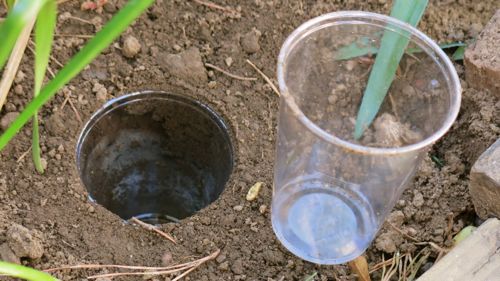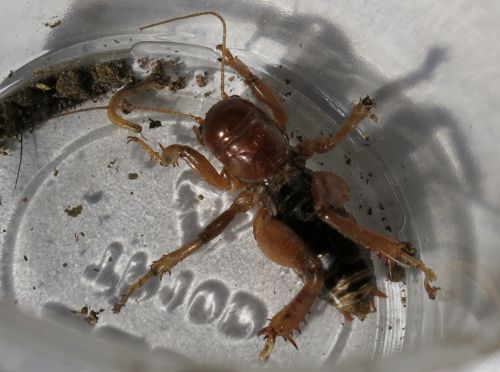When we humans think about the interdependent web of life, we tend to think about the relationships between ourselves and familiar organisms like mammals and trees. These are organisms that are either larger than us or relatively close to us in size, or they are taxonomically close to us. But if you conduct a survey of biodiversity in a given tract of land, the majority of non-microscopic species you find will be invertebrates, e.g., insects, spiders, crustaceans, etc. For a more realistic theological understanding of the web of life, I think it’s necessary to develop a more realistic understanding of biodiversity. It is easy and fun to feel a connection through the web of life to relatively cute organisms like rabbits, and to relatively majestic organisms like redwoods. Understanding our connections with organisms that are not particularly cute or majestic expands our idea of the interdependent web of life.
A few years ago, I participated in a blogger’s bioblitz; a bioblitz is a study that provides a “snapshot of biodiversity.” One of the tools used in a bioblitz is an insect pitfall trap; this kind of trap provides a sampling of insects and other invertebrates. I decided to place an insect pitfall trap in our front yard, so I could see some of the invertebrates that live in our urban setting.
Some online research revealed that pitfall traps made of glass are most effective (Oecologia 9. VI. 1975, Volume 19, Issue 4, pp 345-357), but the easiest way to make a pitfall trap is with nested plastic drinking cups. You dig a hole deep enough to bury the two nested cups, and pack dirt around them so that the rim of the upper cup is exactly at ground level. Then you can remove the upper cup, dump out all the dirt that fell into it when you were burying it, and then replace it. I used two nested 10-ounce clear plastic drink cups:

To use pitfall traps ethically, you should check them at least once a day, and either release the captured organisms or collect them responsibly. If you’re expecting rain or hot sun, you should place some sort of cover over the trap, raised up an inch or two. The cover will keep rain and sun out, but still allow invertebrates to crawl into the trap. If you’re no longer going to use the trap, pull it out of the ground.
Here’s what I found in my pitfall trap this afternoon:

The large organism appears to be in the genus Stenopelmatus; from looking at online identification guides, I’d guess this organism is probably a Dark Jerusalem Cricket (Stenopelmatus fuscus [Haldeman, 1852]). Where does it fit into the web of life? According to the Nevada at Reno Department of Extension: “Because it is nocturnal and comes out of the ground at night to roam around, owls, including the endangered spotted owl, feed on it. Probably other nighttime predators such as coyotes, foxes, and badgers eat it as well.” As for their food sources, the Orange County (Calif.) Vector Control District (OCVCD) says the primary food sources of Jerusalem Crickets are “plant roots and tubers; however, “they also feed on other insects, even their own kind.” The OCVCD also states that Jerusalem Crickets do not pose a health threat to humans.
The other organisms in the trap — you can see something like a centipede under the Jerusalem Cricket’s left antenna — were too small for me to have any hope of identifying. Besides, if I’m going to accurately identify insects and similar invertebrates, I’d need to ask an entomologist equipped with powerful binocular microscope.
